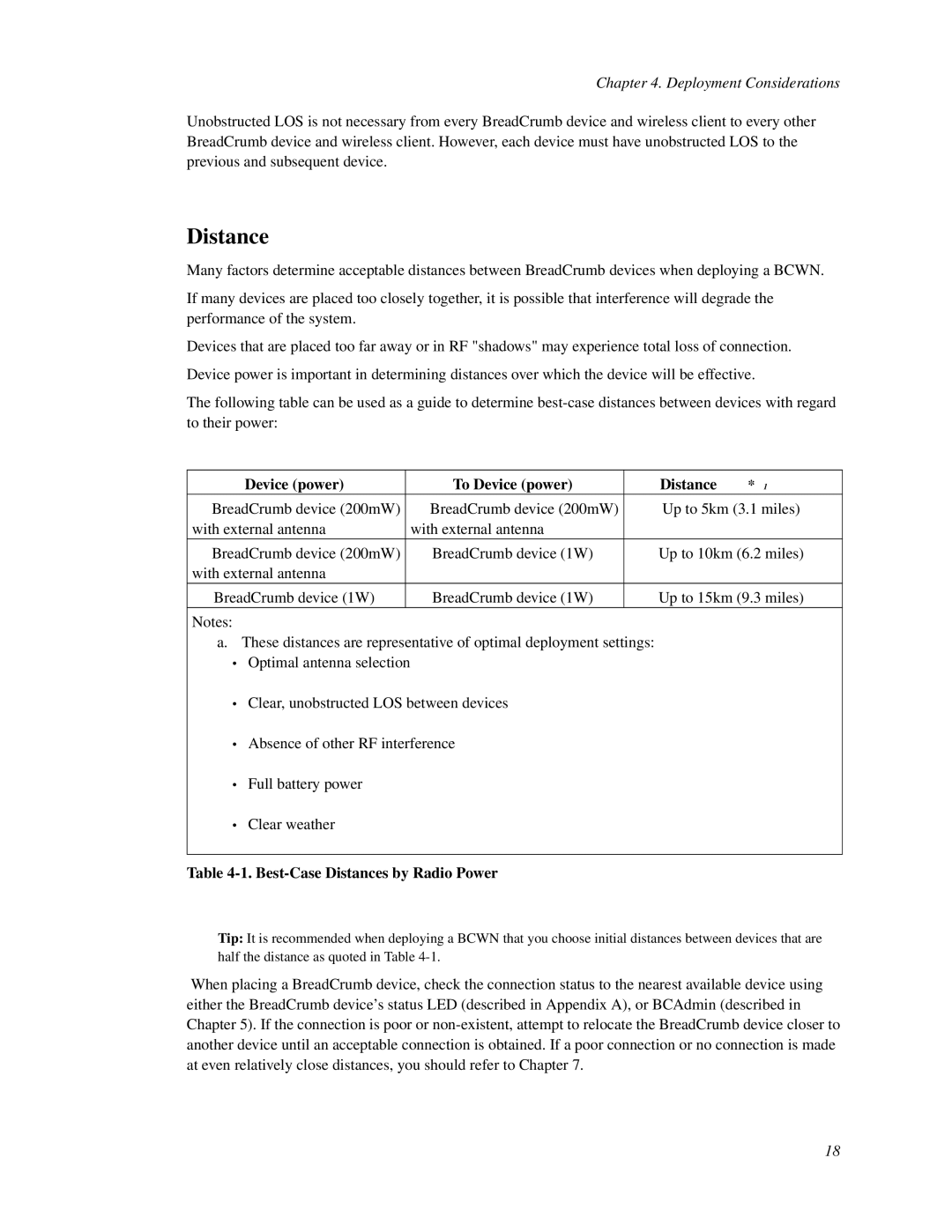Chapter 4. Deployment Considerations
Unobstructed LOS is not necessary from every BreadCrumb device and wireless client to every other BreadCrumb device and wireless client. However, each device must have unobstructed LOS to the previous and subsequent device.
Distance
Many factors determine acceptable distances between BreadCrumb devices when deploying a BCWN.
If many devices are placed too closely together, it is possible that interference will degrade the performance of the system.
Devices that are placed too far away or in RF "shadows" may experience total loss of connection.
Device power is important in determining distances over which the device will be effective.
The following table can be used as a guide to determine
| Device (power) |
| To Device (power) |
| Distance | * 1 |
BreadCrumb device (200mW) |
| BreadCrumb device (200mW) |
| Up to 5km (3.1 miles) | ||
with external antenna |
| with external antenna |
|
|
| |
BreadCrumb device (200mW) |
| BreadCrumb device (1W) |
| Up to 10km (6.2 miles) | ||
with external antenna |
|
|
|
|
| |
BreadCrumb device (1W) |
| BreadCrumb device (1W) |
| Up to 15km (9.3 miles) | ||
Notes: |
|
|
|
|
|
|
a. These distances are representative of optimal deployment settings: |
|
| ||||
• | Optimal antenna selection |
|
|
|
| |
• Clear, unobstructed LOS between devices |
|
| ||||
• Absence of other RF interference |
|
| ||||
• | Full battery power |
|
|
|
| |
• | Clear weather |
|
|
|
| |
|
|
|
|
|
|
|
Table 4-1. Best-Case Distances by Radio Power
Tip: It is recommended when deploying a BCWN that you choose initial distances between devices that are half the distance as quoted in Table
When placing a BreadCrumb device, check the connection status to the nearest available device using either the BreadCrumb device’s status LED (described in Appendix A), or BCAdmin (described in Chapter 5). If the connection is poor or
18
